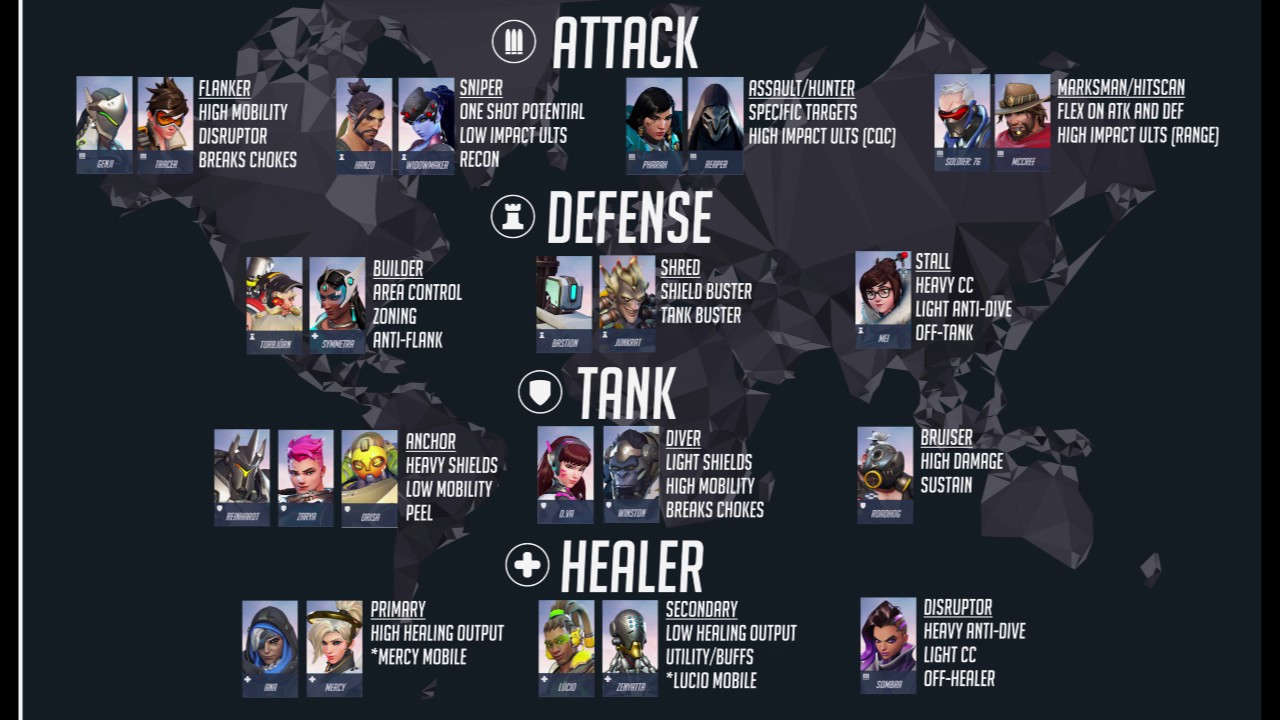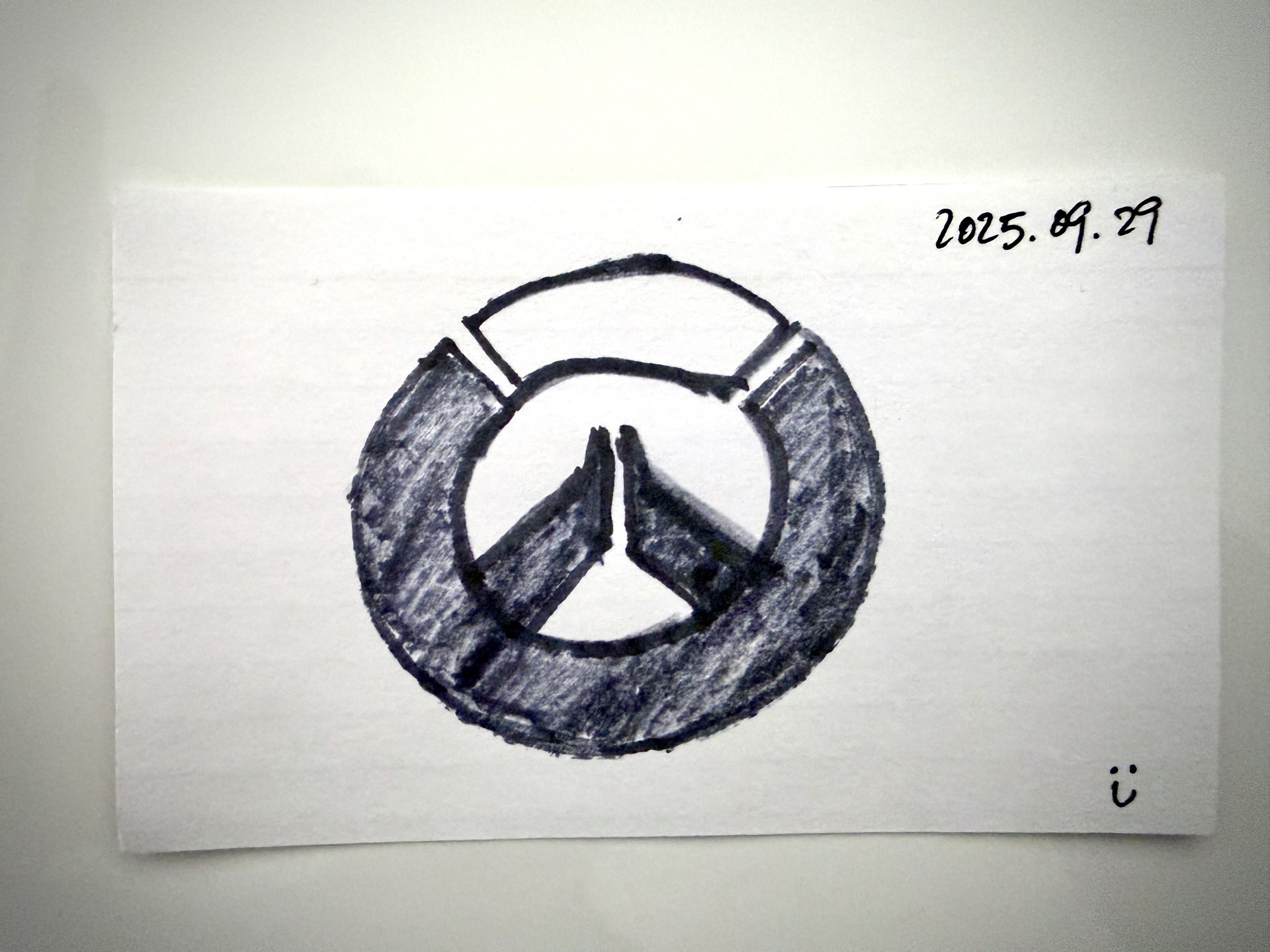If you've ever played a game that involves a team of any kind. From the heroes of Overwatch, to the champions of League of Legends, even down to "the six" you train up on Pokemon. You would have experienced at least an awareness of a very important mechanic: Team composition.
And it’s not just these games. It’s any game where someone has to work with someone else — a party in an RPG, a squad in Halo, or a professional lineup in some pro league of “sportsball.”
---
Sidenote: I'm not into sports. So I can only make assumptions based on what I've gleaned from watching sports movies growing up and random videos I've seen on YouTube. But the point still stands. I hope. Back to the post!
---
And it goes way beyond just role or position. Way beyond.
For a team to actually work (really work), it’s not enough to have an Engineer, a Designer, and a Product Manager — the software world’s “EPD” holy trinity. Just like it’s not enough for your raid party to have a healer and a damage dealer.
Because whether it’s gaming or work, you can’t just slot people into boxes and expect it to click.
Roles
Take Overwatch. The default comp is Damage, Tank, and Support. Each one, as you may imagine, plays a specific role: Damage is your eliminator, Tank is your shield and battering ram, Support is your healer keeping the squad alive. Together (in theory), they move as one to push the payload, capture the point, win the round.

In theory, it’s all you need. But in practice? A bad Tank can sink you faster than no Tank at all. A Support who won’t support is dead weight with healing powers.
It’s not enough to have the right roles checked off. The heroes matter. And even more than that, the players behind them matter.
Some heroes are fast but fragile. Some are slow and nearly unkillable. Some hit like a truck — but only if you land the shot. What matters is knowing how each piece works, how they fit together, and whether the players behind them can not only carry their role, but complement the rest of the team.
What matters isn’t the role, it’s the rhythm between roles.
Roster
(Back to reality.)
Talking through Overwatch mechanics wasn’t just me nerding out about a game I played (though it was fun—thanks for indulging me).
For me, seeing teams through that lens—composition, balance, kits, counters—is fundamental to how I organize and work with real people on very real projects.
And in most work settings, especially as an individual contributor (IC), you don’t get to pick your party. (Myself included.) The last few years I’ve been plopped into new areas with new teams and told, essentially, “make it work.
So I do—by starting with comp.
---
Sidenote: Acknowledging that there's a bunch of problems to self, for this post, I'm going to focus specifically on team comp, specifically through the lens of a team lead. Back to the post.
---
The first thing I look at with any new team is the roster. Given these people, with these skills, who’s best positioned to do what?
It’s never as simple as “back-end person gets back-end tasks. Obvi! Done.” There’s always warm-up time before folks hit their stride — especially if, like me, you’re often dropped mid-project into a moving train. So after the usual Zoom intros (“Hi, my name is… I’m from here… I like hotdogs… Who hasn’t gone yet?… Popcorn to Kevin!”), I set up one-on-ones to really get to know people.
I want to hear candidly: what problems do they love solving? Which ones scare them? What’s working well? What sucks? What are they hoping to get out of this project? I take notes.
From there, I start building a profile of the team’s comp:
Who are my Damage players — the ones who can dive deep, fast, but maybe struggle with context switching?
Who are my Tanks — steady, persistent, harder to burn out?
Who are my Supports — the glue that fills gaps, logs bugs, pairs with others, connects across teams?
The game changes once you start seeing roles this way. Now it’s not about titles — it’s about what each person can actually do. The work is making sure their strengths stay unlocked and uninhibited, and their weaknesses are covered, supported, and compensated for.
---
Sidenote: You don’t have to use Damage, Tank, and Support as your labels — that’s just the language I know best. Use whatever breakdown makes sense for you.
And no, this isn’t about “gamifying” work. It’s about borrowing game design mechanics and strategies to solve very real, very non-game problems. Two very different things.
Back to the post.
---
Watch
Once you start seeing a team as a roster of roles — strengths to unlock, weaknesses to cover — the question becomes: how do you keep it all working together?
That’s where “Overwatch” comes in.
In games, Overwatch isn’t just the title — it’s also a military tactic. It means taking a vantage point to oversee the team as they move, stepping in with support when needed.
For me, that’s what leading a team feels like. Not some stereotypical movie General dude where all they do is move miniature chess-like pieces across a big map with a skinny push-broom looking stick. But in the weeds. On the field. On the ground. Shoulder to shoulder. Moving with them. Being with them.
To stay a couple steps ahead. Scan for the shifts you know are coming — the unsurprising-yet-somehow-still-shocking turns every project throws at you.
You know. Like that very important dependency that you needed from this other team? Turns out, they just decided last minute that they weren’t going to do it anymore. And you only found out from some 50 message deep Slack thread you happened to be cc’ed on 2 days after they had that decision meeting. Surprise!
This is when you look around and ask:
- How’s my Tank holding up?
- Is my Damage player burning out?
- Is my Support being stretched too thin?
Sometimes that means shuffling responsibilities. Sometimes it’s about giving someone breathing room. Sometimes it’s just letting them know you see what they’re carrying.
Change can feel disruptive. But from the right vantage point, it can also be the adjustment that brings balance back. That keeps the comp strong. That helps people feel supported — even when they didn’t have the words to ask for it.
Your role of Overwatch. Not to command, but to care.
Cover
Overwatch in games is about covering your team. Overwatch in real life is the same. Not micromanaging, not barking orders from the sidelines — but standing close enough to catch the cracks before they spread. To see when your Damage player is overextending, when your Tank is starting to wobble, when your Support is quietly drowning.
Because projects aren’t won by perfectly balanced org charts or rigid role definitions. They’re won when people feel like someone’s watching their back.
That’s the work of leading a team: to anticipate, to adjust, and to remind folks they don’t have to carry the load alone.
Do that, and suddenly the comp doesn’t need to be perfect. The plan doesn’t have to survive intact. The game doesn’t even have to go the way you expected (it usually doesn’t).
Because the game will change. And you and your team will change with it.
